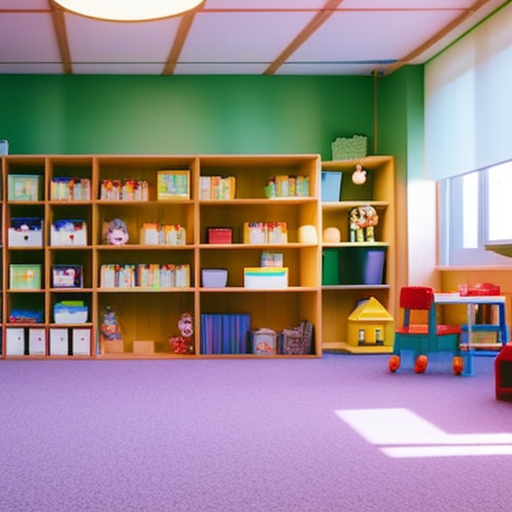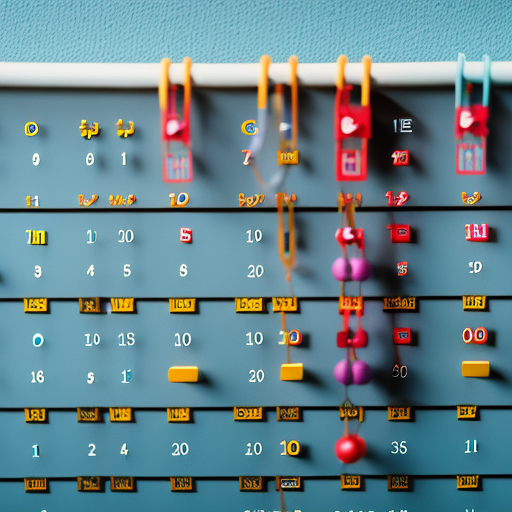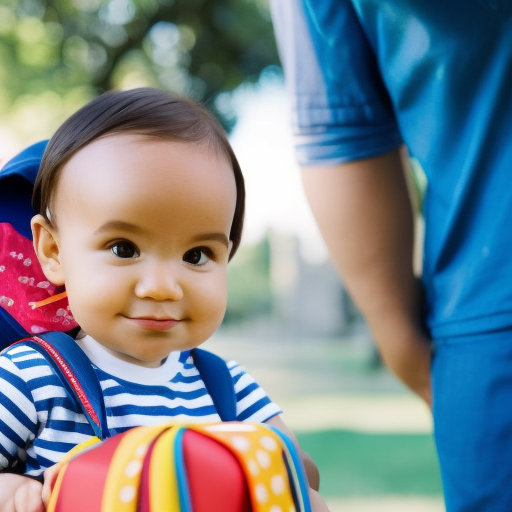"Cherishing Little Steps - A Haven for Baby and Family Journeys"
Preparing for Preschool: A Guide
Have you ever wondered what it takes to prepare your child for preschool?
Well, the truth is that getting ready for this new chapter in their life can be both exciting and overwhelming. As a parent, you want to ensure that your little one has a smooth transition and is well-equipped to handle the challenges that come with preschool.
But where do you start? How do you set the stage for success?
In this guide, we will explore some essential tips and strategies that will help you navigate the journey of preparing your child for preschool.
So, let’s dive in and uncover the secrets to a seamless preschool experience.
Key Takeaways
- Creating a welcoming environment and familiarity with colorful posters and artwork.
- Establishing a routine with consistent wake-up and bedtime hours, regular meal and snack times, and incorporating activities like reading and playtime.
- Packing essentials for preschool including healthy snacks, a water bottle, a change of clothes, and a comfort item.
- Nurturing social skills through playdates, group activities, role-playing games, and teaching the importance of sharing and turn-taking.
Setting the Stage

Get ready to create a welcoming and stimulating environment as you set the stage for your child’s preschool experience. Creating a warm and inviting space is essential in helping your little one feel comfortable and excited about their new adventure. Start by decorating the classroom with colorful and engaging posters, artwork, and educational materials. Hang up pictures of your child’s favorite characters or animals to make them feel at home.
Introducing new routines is another important aspect of setting the stage for preschool. Help your child understand the daily schedule by talking about it at home and practicing activities like circle time or storytime. This will familiarize them with the structure of their future classroom. You can also create a visual schedule with pictures or drawings to make it easier for them to follow along.
Incorporating familiar items from home, such as a special blanket or stuffed animal, can also provide comfort during the transition. Encourage your child to bring these items to preschool, as they can help them feel secure and connected to their usual surroundings.
Establishing a Routine

Now that you have set the stage for your child’s preschool experience by creating a welcoming environment and introducing new routines, it’s time to establish a daily schedule that will provide structure and familiarity.
Establishing consistency in your child’s daily routine is essential for their growth and development. It helps them feel secure and confident, knowing what to expect each day.
To establish a routine, start by setting consistent wake-up and bedtime hours. This will regulate their sleep patterns and ensure they’re well-rested for their day at preschool.
Next, plan regular meal and snack times to promote healthy eating habits. Incorporate activities such as reading, playtime, and outdoor exploration into their schedule to encourage learning and physical development.
Another important aspect of establishing a routine is promoting independence. Encourage your child to take on small tasks, such as getting dressed, brushing their teeth, and packing their backpack. This will help them develop self-help skills and boost their confidence.
Packing the Perfect Backpack

What essentials should you pack in your child’s backpack to ensure a successful day at preschool? Organizing essentials and selecting the right backpack size are key factors to consider. When it comes to organizing essentials, it’s important to pack items that will help your child navigate their day with ease. A two-column, four-row table can help you visualize what to pack:
| Essential Items | Why it’s important |
|---|---|
| Healthy snacks | Provides energy throughout the day |
| Water bottle | Keeps your child hydrated |
| Change of clothes | Accidents happen, be prepared |
| Comfort item | Helps your child feel secure and at ease |
Selecting the right backpack size is crucial for your child’s comfort and safety. Opt for a backpack that is proportional to their body size and has padded shoulder straps to prevent strain. Additionally, look for a backpack with multiple compartments for easy organization of their belongings.
Nurturing Social Skills

To help your child develop strong social skills, encourage them to interact with their peers through engaging activities and positive reinforcement. Social interactions play a vital role in your child’s development, helping them learn important communication skills and build lasting friendships.
Here are some practical ways to nurture your child’s social skills:
-
Playdates: Organize playdates with other children in your neighborhood or from your child’s preschool. This will provide valuable opportunities for your child to practice socializing in a familiar and comfortable environment.
-
Group activities: Enroll your child in group activities such as sports teams, art classes, or music lessons. These activities promote teamwork, cooperation, and communication, helping your child develop social skills while pursuing their interests.
-
Role-playing: Engage in role-playing games with your child, where you take turns pretending to be different characters. This activity encourages empathy, problem-solving, and effective communication.
-
Encourage sharing and turn-taking: Teach your child the importance of sharing and taking turns through games and activities. This will help them understand the value of cooperation and develop patience and empathy towards others.
Managing Separation Anxiety
Managing separation anxiety can be a challenging but important aspect of preparing your child for preschool. It’s natural for children to feel anxious when they are separated from their parents or caregivers. However, there are coping strategies you can employ to help ease this transition and build trust with your child.
One effective strategy is to establish a consistent routine. Children thrive on predictability, so create a schedule that includes regular drop-off and pick-up times. This will help your child feel more secure and in control of the situation. Additionally, set aside time each day to talk about preschool and address any concerns or fears your child may have.
Building trust is also crucial in managing separation anxiety. Let your child know that you trust their preschool teachers and that they are there to keep them safe and happy. Encourage open communication and reassure your child that you will always come back to pick them up.
Here is a handy table to summarize these coping strategies:
| Coping Strategies | Building Trust |
|---|---|
| Establish routine | Communicate trust |
| Set regular drop-off and pick-up times | Reassure your child |
| Talk about preschool and address concerns | Encourage open communication |
Preparing for the First Day
To help your child have a successful first day of preschool, it’s essential to establish a sense of familiarity and make the transition as smooth as possible. The first day of preschool can be filled with excitement and first day jitters for both you and your child. Here are some practical tips to help you prepare for this important milestone:
-
Visit the preschool beforehand: Take your child to visit the preschool a few days before the first day. This will help them become familiar with the environment and reduce anxiety.
-
Talk about what to expect: Discuss what your child can expect on their first day of preschool. Explain that they’ll be meeting new friends and participating in fun activities.
-
Establish a routine: Start practicing the morning routine a week before the first day. This will help your child adjust to the new schedule and make the mornings less stressful.
-
Pack a comfort item: Allow your child to bring a comfort item, such as a favorite toy or a family photo, to help them feel secure and at ease.
Frequently Asked Questions
What Are Some Signs of Separation Anxiety in Preschoolers and How Can Parents Help Their Child Cope With It?
Feeling anxious when separated from parents is common in preschoolers. To help your child cope, offer reassurance and establish a consistent routine. Seek counseling services or join parent support groups for additional guidance and support.
How Can Parents Encourage Their Child to Make Friends and Develop Social Skills in a Preschool Setting?
To encourage your child’s social skills in preschool, focus on fostering positive communication and encouraging independence. Encourage them to interact with others, practice sharing, and be a good listener.
Are There Any Specific Items or Materials That Parents Should Avoid Packing in Their Child’s Backpack for Preschool?
Before packing your child’s backpack for preschool, it’s crucial to consider what items to avoid. Keep choking hazards out and remember to label belongings. Safety and organization are key to a successful preschool experience.
What Are Some Strategies Parents Can Use to Establish a Smooth Morning Routine Before Preschool?
To establish a smooth morning routine before preschool, start by creating a consistent schedule. Encourage your preschooler’s independence by involving them in tasks like picking out clothes and packing their backpack. Manage their emotions by staying calm and offering reassurance.
How Can Parents Prepare Their Child for the Transition From Preschool to Kindergarten?
To prepare your child for the transition from preschool to kindergarten, you’ll need transition strategies and communication tips. These will help ease their fears, build their confidence, and ensure a smooth adjustment to their new school environment.
Conclusion
So there you have it, all the tips and tricks to prepare your little one for preschool.
You’ve followed the guide diligently, packed the perfect backpack, and even mastered separation anxiety.
But here’s the irony, no matter how much you prepare, there will still be tears on that first day.
And that’s okay. Because in those tears, there’s growth, independence, and a world of possibilities.
So take a deep breath, hold their hand, and embark on this exciting journey together.
Preschool, here we come!



I loved you better than you would ever be able to express here. The picture is beautiful, and your wording is elegant; nonetheless, you read it in a short amount of time. I believe that you ought to give it another shot in the near future. If you make sure that this trek is safe, I will most likely try to do that again and again.